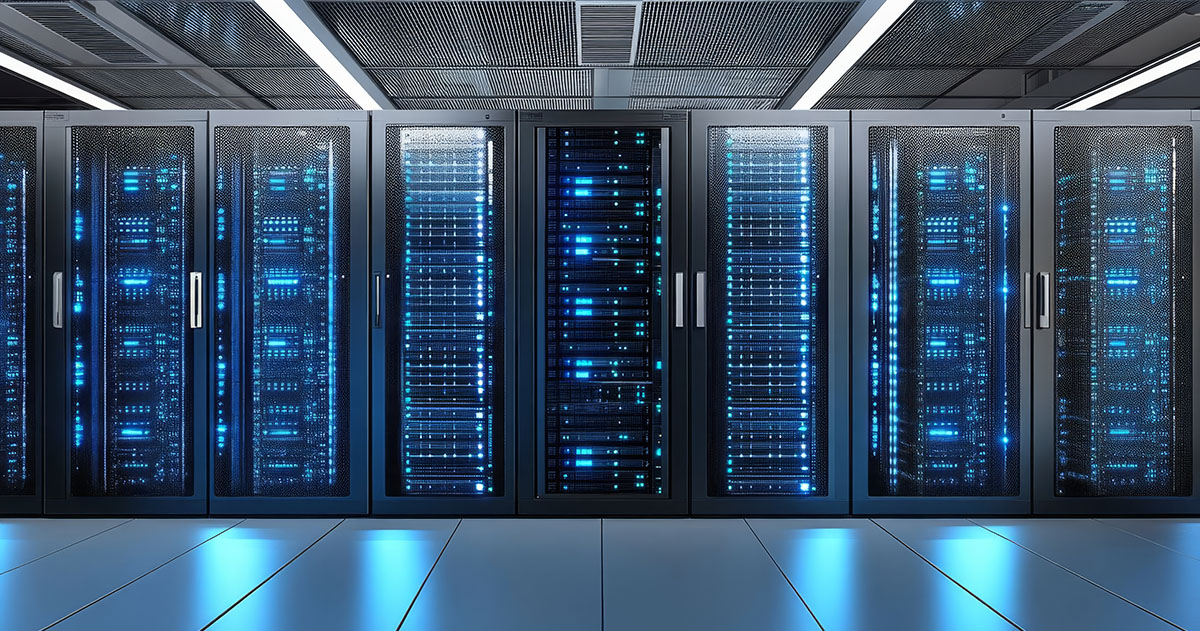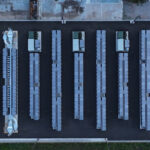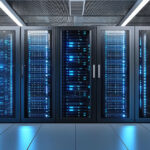Data centers power every part of the internet. From the latest social media craze to healthcare and banking systems and the everyday needs of businesses all over the world, nearly everything relies on data centers. Not surprisingly, those data centers require a great deal of energy to keep the internet’s infrastructure running the way we expect it to.
The need for energy is expected to skyrocket over the next few years as artificial intelligence (AI) continues to train and evolve. This increase in energy usage has led to a significant strain on local power grids, including the potential for delayed retirements of legacy fossil fuel power plants, as these grids try to keep up with demand.
To offset environmental concerns, modern sustainable data centers are using energy more efficiently and tapping into existing sources of clean baseload power where possible. But, there is only so much existing capacity on the grid to leverage. So, onsite power has emerged as an alternative to generate reliable and clean electricity. This approach can lower emissions and support a more resilient energy system for everyone.
Sustainability Challenges
Before diving into some data center energy efficiency strategies, it’s important to understand some of the sustainability challenges data centers are facing.
One of the most prominent concerns is energy demand. Data centers require massive amounts of energy to power servers and store data. Often, this electricity must come from electric grids, many of which are powered by traditional fossil fuels. The more energy they produce, the more greenhouse gases and pollutants are released into the environment, contributing to climate change.
Water consumption is another major environmental issue. Data centers use water to cool down their systems, but in doing so, they consume millions of gallons per day. In some cases, it’s enough water to power a small community! This is particularly a concern in areas facing water scarcity, as data centers put a strain on local resources.
These environmental challenges are all compounded by the rise in AI, as its heavy energy demands increase both grid modernization costs and the rates of those who share the grid with them. They also make less power available to other businesses seeking to scale their operations. Per the Lawrence Berkeley National Laboratory, data centers may well command 12% of all electricity demand nationwide by 2028. Even now, data centers are consuming vast amounts of electricity; for example, 25% of the electricity generated in Virginia already goes to data centers.
There’s a reason for all that extra energy usage: AI processes huge datasets using powerful, specialized hardware that consumes enormous amounts of electricity (while generating lots of heat). The energy needed to cool that machinery spikes power usage further.
The potential environmental impact is troubling, to say the least. In response, the industry is looking for innovative forms of low-carbon power generation that can provide the electricity needed without leaving behind a massive carbon footprint.
Assessing Energy Usage
Some of the most common sustainability metrics for data centers are PUE (Power Usage Effectiveness), WUE (Water Usage Effectiveness), CUE (Carbon Usage Effectiveness, and Energy Reuse Factor (ERF). They help track how efficiently a data center runs and its impact on the local environment.
What is PUE, and why is it important?
PUE was developed to measure how efficiently a data center uses energy. You can calculate it by dividing a data center’s total amount of energy used by the energy used specifically for computing equipment.
The closer your number is to 1, the more energy is going to your actual computing hardware, and the less overall waste it is producing. In this case:
- 1.2 is considered “Very efficient”
- 1.5 is “Efficient”
- 2 is “Average”
- 2.5 is “Inefficient”
- 3 is “Very inefficient”
The PUE of a modern green data center works out to about 1.7; for comparison, back in 2007, when the PUE was introduced, the average PUE fell between 2.5 and 3.
Improving PUE can lead to environmental benefits and cost savings. Lowering the energy spent (or wasted) on cooling, lighting, or power conversion reduces strain on the grid and helps operations meet sustainability targets.
Other sustainability metrics include:
- WUE (Water Usage Effectiveness): Determines the gallons of water used per kWh of IT load.
- CUE (Carbon Usage Effectiveness): Measures carbon emissions associated with energy use.
- Energy Reuse Factor (ERF): Tracks how much energy is recovered or reused onsite.
How Green Data Centers are Reducing Their Environmental Impact
Green data centers, also called sustainable data centers, utilize energy-efficient technologies to reduce energy consumption and minimize their environmental impact. They use the aforementioned sustainability metrics to determine their energy efficiency and decide how to run more efficient operations going forward. Here’s how they can deliver the necessary amount of power while devouring less energy and producing less waste.
Reusing waste heat
Waste heat recovery in data centers focuses on repurposing the heat generated. It can be recaptured and put to work instead of simply being released into the air. Depending on the available equipment, waste heat can be reused to generate more electricity or used for other purposes, whether on- or off-site.
Liquid cooling
Modern servers and equipment require a substantial amount of cooling to operate optimally. Traditional air conditioning works, but keeping large data centers at the necessary temperatures often leads to enormous spikes in power consumption. Liquid cooling is an excellent data center cooling sustainability technique, as it utilizes liquid to absorb and move heat away from systems.
Incorporating hot aisle/cold aisle containment
In this approach, server racks are arranged with their backs or fronts facing each other. The aisles between them are then enclosed to manage airflow. In hot aisle containment, the warm air generated by the servers is directed toward cooling units; with cold aisle containment, the aisles trap the cooled air.
Leveraging renewable sources
Environmental concerns have led many data center operators to advance new renewable energy projects through finance offered by participation in Power Purchase Agreements (PPA’s) to help transform grids more rapidly.
Virtualization
A more recent development in data center sustainability is the use of virtualization, which enables a single physical server to do the job of several. The physical server creates and runs multiple virtual machines and operates them with a program called a hypervisor.
While a virtualized server does consume more energy than it would if it were running a single task on its own, it still requires dramatically less energy than if you built and used multiple physical servers.
Recycling water
Some green data centers are starting to reuse and recycle their wastewater to reduce consumption.
One way they’re doing this is by treating the used water and using it to cool their systems. Another approach is to incorporate closed-loop cooling systems, in which the same water is repeatedly circulated through the cooling cycle. Both of these techniques minimize the need for discharging used water and resupplying it with freshwater.
Onsite power
What if a data center didn’t have to connect to the grid at all? Newer sustainable data centers are generating their own power via solid oxide fuel cells. They can convert natural gas, biogas, or hydrogen into electricity without using combustion, which results in lower emissions due to their high efficiency. Solid oxide fuel cells are also well-suited for capturing and sequestering any resulting carbon dioxide. And because they operate independently of regional power grids, neighboring communities won’t need to worry about spiking prices or potential power outages due to strain on the grid.
Committing to environmental programs
Environmental programs help incentivize data centers to adopt sustainable practices. For instance, LEED (Leadership in Energy and Environmental Design) certifications encourage data centers to address areas like energy consumption and water conservation. Data centers with LEED certifications have demonstrated that they’ve met the specific sustainability criteria.
Focusing on sustainable building practices
While existing data centers may focus on adopting sustainability initiatives, newer data centers may be built in a “greener” way to minimize their carbon footprint. This includes being built around the strategies and technologies we’ve been describing, but also involves reducing embodied carbon, which refers to the emissions released during every stage of the construction project’s lifespan, from manufacturing to installation. For instance, the site may source local building materials, use recycled or low-carbon supplies, and minimize waste generated during construction.
Learn More About Sustainable Data Centers
Bloom is at the forefront of the data center sustainability effort, and its onsite power might be the answer to the power demands that will rise as the AI revolution continues. The consistent and reliable power it provides, combined with its lower emissions, makes it a wise choice for data center energy efficiency.










